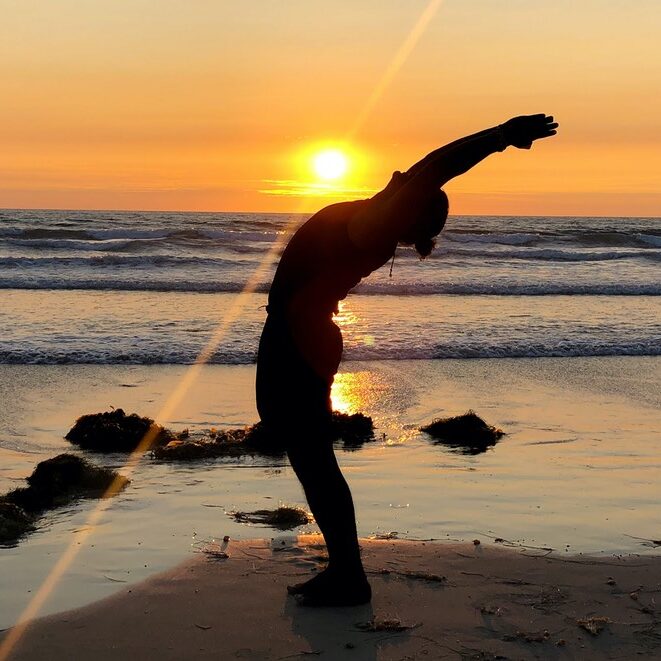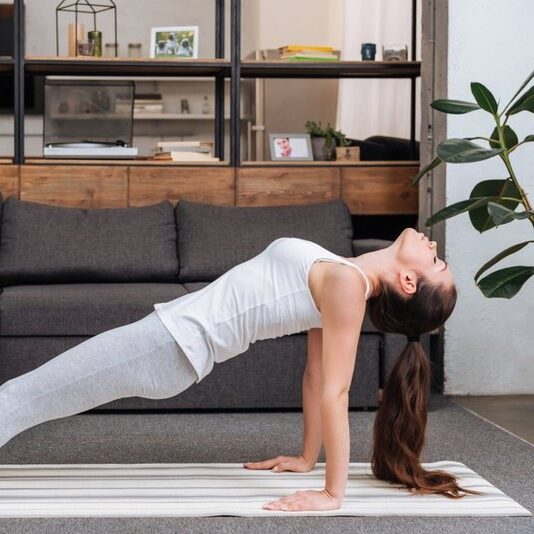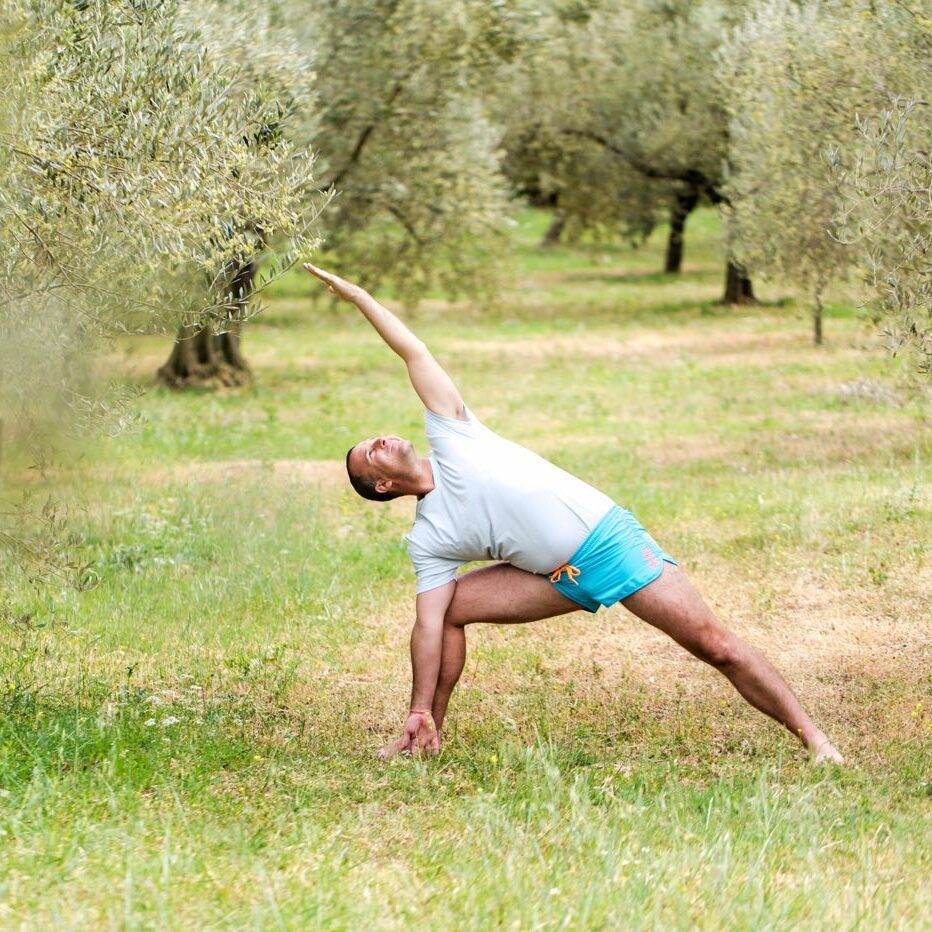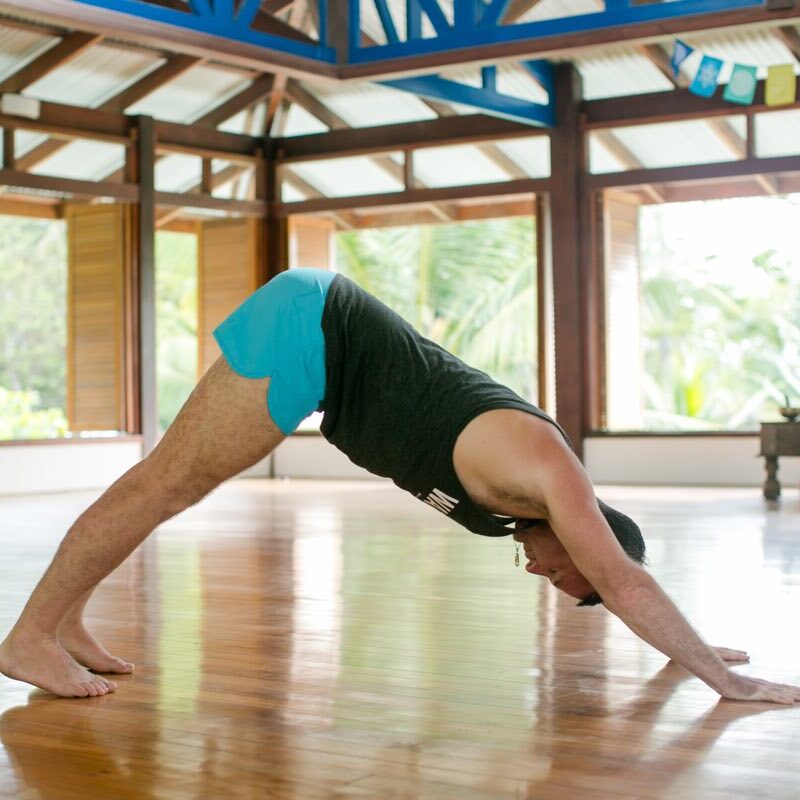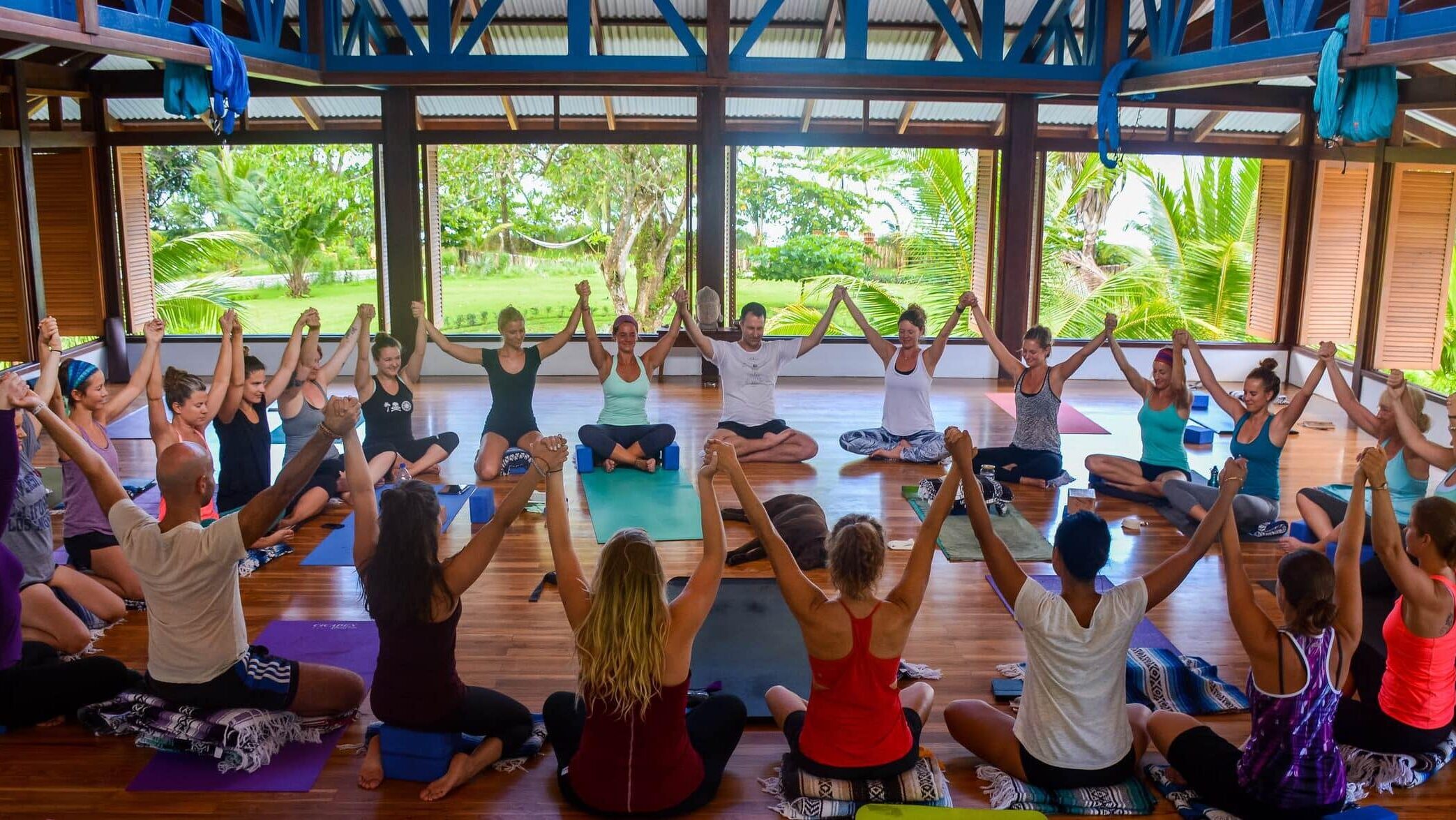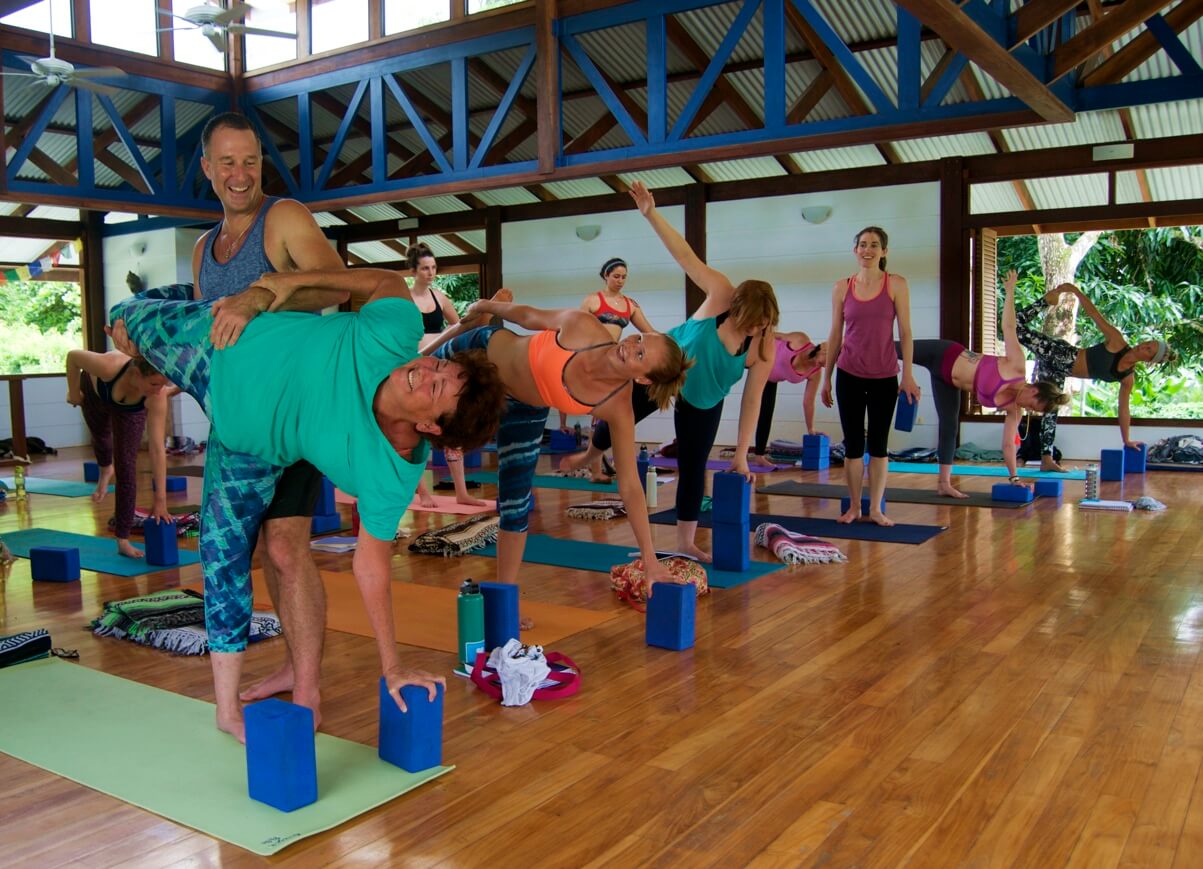“Our peace shall stand as firm as rocky mountains.” – William Shakespeare
Mountain pose is a very important pose to lay the foundation for one’s yoga practice. This standing posture may not look like much is happening from the outside but we want to enlighten you to the internal power that is created from practicing mountain pose because mountain pose is the foundation of every other standing pose.
We hope the below information, practice and variations of mountain pose inspire you to add this power pose to your daily routine and see how your external world begins to reflect your internal world.
Tadasana: Mountain Pose
Tadasana is the Sanskrit phrase, meaning tada-mountain and asana-posture. In the practice of Ashtanga yoga, this very same pose is known as Samasthiti.
Samasthiti translates to sama-equal and sthiti-standing. Both given names of this asana serve to exemplify the cultivation of stability, strength, balance and ease. These attributes can be cultivated both physically and mentally.
Mountain pose allows the practitioner to find a moment of stillness and serenity. It is typically used as a resting pose or transition pose between other standing poses. Tadasana is used in both Surya Namaskar and Chandra Namaskar sequences. With a strong base rooted through the feet, this pose allows the practitioner to be reminded of the mountains, feeling strong and sturdy to move into other postures.
If you are looking to begin your own yoga practice, then this asana is the perfect place to start. Mountain pose promotes strength in all parts of the body and improves posture.
Yoga Philosophy
In Patanjali’s Yoga Sutra, sutra 2.46 says: sthira sukham asanam. This translates to “resolutely abide in a good space.” Sthira means sturdiness, stability, steadiness; sukha means good, ease, comfort. Asana or Asanam means to sit. When thinking of the word asana one may commonly bring to mind the very active and physical practice of yoga, including a lot of movement from pose to pose. However, this sutra describes to us what is truly the purpose and intention of an asana practice; to sit with ease and stability in the pose. This sutra can also be translated to mean that “one’s posture must be steady and comfortable.”
Sthira and sukha are exactly the attributes that a yogi wants to cultivate while practicing mountain pose . . . a perfect balance of ease and stability. This posture is the perfect place to re-center, and re-connect to the breath and the intention of one’s yoga practice. Ease and stability should be strived for in every asana, tadasana can be the perfect place to remind oneself of that.
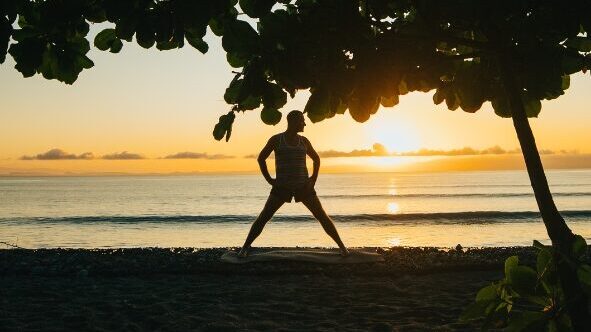
Maha Alignment
Maha means great. Therefore, maha alignment refers to the alignment that is overall strived for in yoga asanas.
This alignment means that the joints are stacked over one another . . . the hips stacked over the ankles, the shoulders stacked over the hips, and the vertebrae of the spine stacked in a column in the center of it all. It is important to remember to keep the abdominal muscles engaged in order to maintain the proper elongation of the spine.
As referenced in the meaning of samasthiti, which means equal standing, it is important to focus on the equal distribution of weight throughout the feet. This is something that one may not often consider in their standing posture, but can make all the difference when it comes time to move to more challenging balance postures.
Tips for Practicing Mountain Pose
- Stand on the yoga mat with feet either close together or hip distance apart. With the feet closer together this provides more of a challenge for balancing.
- Focus on your feet first, cultivating a sense of groundedness by pressing down through all parts of the feet. Lift all 10 toes, stretch them out, and replace them on the ground to strengthen your grip through the feet.
- Engage through the legs, squeeze together the inner thigh muscles slightly and the pelvic floor or the perineum up and in.
- Engage your abdominal muscles to properly support and add length to the lower vertebrae of the spine. Feel that the navel is pulling in towards the spine and that the sides of the stomach are also coming in towards that center.
- Open the chest, drop the shoulders away from the ears and down the spine. Feel the collar bone elongate and manubrium point forward.
- Close the eyes or soften your gaze to bring your awareness inwards so that you can properly focus on the intention of right alignment, balance, ease, stability, and groundedness.
- Focus on the breath. With this newfound right alignment in the body and length of the spinal column, the breath is able to travel and flow more freely.
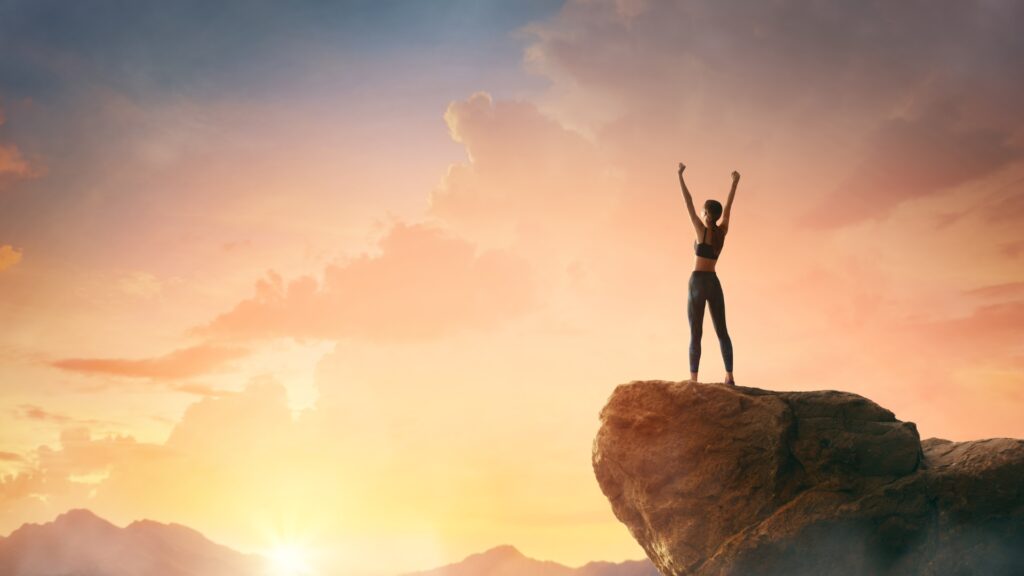
Benefits of Mountain Pose
- Increased sense of balance
- Increased sense of groundedness
- Improved capacity for breath
- Improved posture in general
- Joint health and alignment
- Increased ability to be still
- Foot and ankle health
- Promotes feelings of peace and calmness
Variations of Mountain Pose
Wall Support: Use the wall as support for the spine in order to better understand the alignment required for this pose.
Block Between the Feet: Place a yoga block between the feet and squeeze it. This will allow the legs and feet to be properly engaged.
Tadasana Namaskar: Mountain pose with prayer hands.
Utthita Tadasana: Extended mountain pose.
Tadasana Paschima Namaskar: Mountain pose with prayer hands behind the back.
Urdhva Hastasana: Palm tree pose/upward salute.
Is a Yoga Teacher Training Right For Me?
A yoga teacher training can offer the time necessary to dedicate to improving and deepening a personal yoga practice.
Committing to a yoga teacher training is a big decision to make in and of itself and if you’re considering traveling to a destination like Costa Rica to enroll in a yoga teacher training program, that’s an even bigger commitment.
But rest assured that the best place to start or deepen your yoga journey and improve your asana practice is at Blue Osa’s immersive style yoga teacher training. Making this committment towards self improvement, discovery and transformation is one of the best and most beneficial investments you can make in your life.
If you’re ready to learn more about Blue Osa’s immersive style yoga teacher training, click the link below.
Check Out These Other Popular Posts!
Tags: Costa Rica Yoga, Yoga
Book/Inquire Now
Got pain? This will help you!
YOU DESERVE TO LIVE PAIN-FREE...
Receive 7 short, simple, and effective practices to alleviate knee, hip, low back, neck, shoulder pain, and more!
All you need is 5 minutes per lesson and it's FREE!
This revolutionary approach to yoga is new, and no one else is teaching this! Since I created Applied Yoga Anatomy + Muscle Activation™ and started teaching it consistently, I've witnessed students heal long-standing injuries, access yoga postures they never thought possible, and tell me over and over again how their body just feels better.
I hope you'll join me on this journey!
~Yogi Aaron
Is Yoga Teacher Training Right For Me?
We Created This FREE 5 Part Series So You Can Get All The Information To Make The Right Choice.
In this series, you will learn:
-
- Am I a candidate for yoga teacher training??
-
- What will I learn in a YTT?
-
- Do I need to have a perfect downward dog to attend YTT?
14-Day 200-Hour Yoga Teacher Training in Costa Rica
If you are looking for a 14-day 200 hour Yoga Teacher Training Costa Rica Immersion, you have landed in the right place. Join the next one!
300-Hour, 28-Day Yoga Teacher Training
Do You Feel Called To Something Greater?
This 300-Hour Yoga Teacher Training immersion training at Blue Osa will immerse you in yoga for one month.
You will have the specific transformational skills and yogic practices you need in order to connect with your higher purpose.
And more! You will be able to offer these transformative skills to others!

